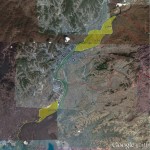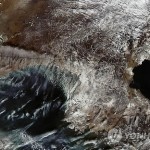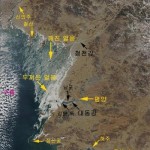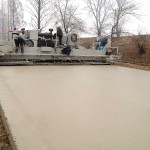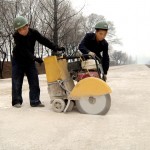Andray Abrahamin and John Kim worte a comprehensive summary of the current state of Rason. The article appears in The Diplomat:
In 1991, the North Korean government dubbed Rajin-Sonbong (Rason) a free trade zone to attract foreign capital. However, less than a decade later, the zone lost its free trade status. According to local businessmen, the party secretary of Rason, a relative of the late Kim Jong-il himself, was charged with corruption and eventually executed, a harbinger for the long period of isolation ahead. Since the end of 2009, signs of renewed commitment to Rason have sprouted. While it may be too early to say whether the region will succeed in drawing investment and reform, our recent trips to Rason lead us to believe that developments on the ground may eventually warrant a shift in foreign policy by governments around the globe.
China has long eyed Rason as a potential import/export center for the landlocked provinces of Jilin and Heilongjiang. However, from Rason’s inception, the Middle Kingdom held little influence or interest in the region’s success. In 2002, North Korea establishedanother special economic zone in Shinuiju and instated businessman Yang Bin, then China’s second richest man, as the SEZ’s Chief Executive. The Chinese authorities promptly placed Yang Bin under house arrest. Perhaps as a lesson learned from this episode, the North Koreans have made the Chinese government a major stakeholder in Rason’s development.
The Chinese have moved 80,000 metric tons of coal this year through a pier they leased at the Rajin port.They are also reportedly sending regular delegations of senior officials, including the Chairman of the China Development Bank, and they have invested $30 million to repave the road from the border town of Wonjong to the Rajin Port. This road was 60 percent paved during a visit in October, and recent reports from businessmen inside the region confirm that the road is now 95 percent paved, allowing for large trucks to pass through. The Chinese have also constructed a new road on their side of the border, part of the support this area has received after the Chinese central government designated it “The Changjitu Development Region” in November of 2009.Officials from the North explained that the Chinese will have a say in everything from zoning of real estate to port customs and investment policies.
Though Russia’s involvement doesn’t run as deep, it also maintains a keen interest in Rason’s ice-free port and has pledged an investment of $200 million to refurbish a railway from the border town of Khasan and to upgrade pier three at the Rajin port, which it has leased for 49 years. Rason’s third port at Oongsang was once a major exporter of lumber from the Soviet Union, and though Oongsang looks far from reviving the Soviet involvement of its heyday, Russia clearly has an interest in Rason’s success as well.
In addition to neighboring countries’ newfound interest in the zone’s success, the North Korean leadership has also shown a renewed desire in luring investment into the region. In December 2009, Kim Jong-il made a visit to the area, sent his former trade minister to run the region as party secretary, and reinstated Rason’s status as a special city, wresting it out of provincial control. Any potential investor who visits the SEZ would experience the thirst of the local government to develop the region, as reflected by the words of an official with the Rason Economic Cooperation Bureau, Rhee Sung Hye: “The future of my career depends on how much investment I can bring.”
At the national level there are also signs that the regime is increasing its focus on economic development as a source of legitimacy. In 2009, the Joint Venture Investment Commission was formed as a one stop shop for foreign investors, while the Taepung Group and State Development Bank were created to attract foreign investment. In the first half of 2011, Kim Jong-il made more appearances related to the economy and less related to defense than in prior years, and a focus on improving lives through focus on light industry and agriculture was emphasized in joint editorials that signaled policy direction at the beginning of 2010 and 2011.
The alignment of simultaneous commitment from North Korea, China, and Russia sets the scene for a North Korean special economic zone with higher chances of success than perhaps ever before. However, interest and desire may not necessarily translate into results without knowledge of markets and how to create a stable investment environment. After a recent tour of his 200MW fuel oil powered generation facility, the President of Songbong Power, Rhee Kang Chul, expressed that the reason for his plant’s inactivity and the subsequent blackouts in the region was the rise in feedstock costs. When asked about mechanisms for electricity pricing, Rhee responded that the government had set power prices at 6.5 euro cents/kwh, but he couldn’t provide further details on how the number was arrived at and when it might change again. Though Rhee was clearly an expert on the technical aspects of power generation, he hadn’t had the chance to consider that potential investors, after getting comfortable with country risk, would have little clarity on the revenue side of their equation. When this was expressed to the Vice Mayor of Rason, he replied, “We can change the price of electricity here. Rason is not under the same restrictions as the rest of the country.”
North Korea could theoretically piggyback off the market knowledge that their Chinese partners have gained over the last 30 years, but Rason’s neighbors are only likely to share when it suits their interests. In the case of Sonbong Power, Kang told us that every Chinese official who has visited stated that the most effective solution would be to pipe in power from the Chinese grid. “We plan to have a power line installed from the border by the end of 2013.” As power is as strategic asset like food or water, dependence on Chinese power clearly leaves the North Koreans in a vulnerable position.
China is clearly North Korea’s closest ally, but their relationship has a thorny history and Pyongyang is acutely aware of its reliance on big brother Beijing. With China’s rise, many other countries in the region are increasingly dependent on trade but increasingly cautious of dependence, welcoming a stronger presence from the United States, which is in the midst of a strategic pivot towards Asia.
In December 2009, the Asia Society and the Institute on Global Conflict and Cooperation published a report arguing that economic engagement of Pyongyang by the United States would result in creation of vested interests in continued reform, a changed perception of self-interest and a less confrontational foreign policy from North Korea. Against the backdrop of a more uncertain domestic environment after the death of Kim Jong-il, and the shifting dynamics in Asia generally, a North Korea that trades more and engages with the outside world may necessitate a change in foreign policy of governments around the world, most specifically the United States, South Korea, and Japan.
The Rajin-Sonbong SEZ has a checkered past and it would be naïve to say that North Korea is embarking on late 1970’s style Chinese economic reforms. However, we believe that the unprecedented alignment of interests in the region make it a likely starting point for any lasting directional change, which is why the world should watch Rason.

